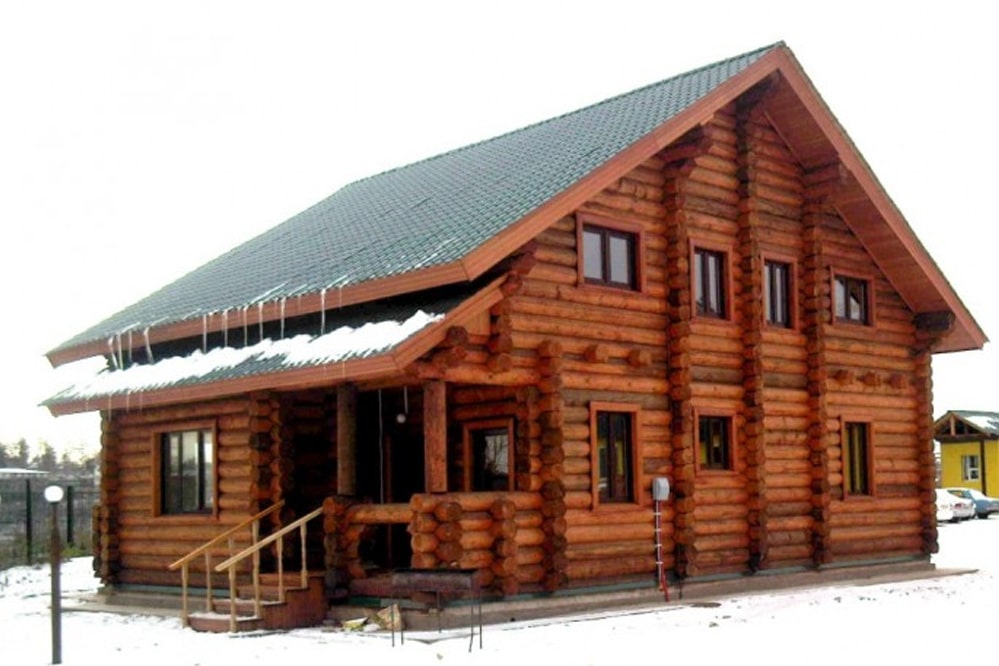Log home owners are most drawn to the unique and natural characteristics of logs. Log structures are appealing to the eye, touch and also their innate strength. The most important question that comes to people contemplating investing in a log home is the kind of wood that is best suited for log home construction. There are many wood species, each with distinctly different characteristics. The species of wood best suited for your log home construction will depend on a number of factors, such as building style & design, geographic location, and project needs.
History is proof that all wood species can be used for home construction, within certain limitations. Wood being produced from a living tree, possesses physical and material properties that are different from any other construction material used for structural design. Whatever be the species of wood you select for your log home, people usually look at features such as aesthetics, cost, and strength for a beautiful and long-lasting home.
Characteristics of Wood Species
The major characteristics that have a bearing on log home buyers are appearance, durability, decay resistance, energy efficiency, cost and the shrinking, warping and checking it will face over the years. There are other considerations that affect the selection of wood species too, so it becomes difficult to choose one species as the best. Here is a review of some of the major characteristics.
Appearance
The exterior of the log home changes with the appearance of wood but it may change over time from weathering. The use of wood preservatives can also alter the appearance of wood. The appearance of each wood species is distinctly different and choosing one will depend solely on personal taste.
Decay Resistance
Although the natural decay resistance of various species of wood differs considerably, most producers strongly recommend treating the exterior of log homes with a wood preservative. The natural decay resistance factor should not unduly influence your choice of a particular wood species. The natural decay of wood depends on the different species of wood and it may even deteriorate from insect damage or decay under specific conditions. Decay can affect the strength of the wood more than apparently visible. There may be strength losses from 50%-70% for even weight loss of only 3%. Insects severely damage wood structure by feeding on it or using it as shelter, which can alter strength of the wood. Fortu¬nately, the exterior of log homes can be treated with wood preservatives to provide natural decay resistance and insect attack, which protects the wood.
Durability
The natural durability of wood is related to species and anatomical characteristics. Generally the sap¬ wood of all species offer little resistance to deterioration and can be easily affected in extreme environments. Heartwood usually forms when the living sapwood cells gradually become inactive. The heartwood of some species exhibits greater durability in ground or marine environments and sometimes even to borers and insects. But there are very few species of durable heartwood found in North America. Baldcypress, cedars, and redwood are three North American commercial varieties that are naturally durable.
R-Value
Log homes turn out to be energy efficient because of the natural and renewable properties of wood. The R-value evaluates the energy efficiency of a log home and it differs for each species of wood, ranging from the highest to lowest. The R-Value of wood ranges from 1.41 per inch for most softwood and 0.71 for most hardwood. Energy efficiency is calculated according to 1.25 inch of wood per “R”.
Stability
Wood tends to shrink, twist, warp and check which is controlled through good materials-handling techniques. For example, wood that is known to shrink is preferably kiln-dried or air-dried, to control any shrinking characteristic. Wood log is carefully graded according to its intrinsic tendency to twist or warp so that it can be identified and rejected. The instability of some species of wood can be checked through proper materials selection and management process.
Cost
The price of different wood species can vary significantly. Some wood can be difficult to commercially produce in huge quantities or it may be a slow-growing species increasing the cost. While other species may be a fast-growing, making it easily available in commercial quantities, bringing down the price tag.


